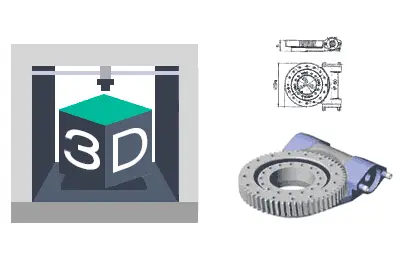In this post we are going to see the main CAD (Computer-Aided Design) software available, within our section dedicated to 3D design and printing.
In the previous post we saw different alternatives and types of programs for 3D design, because not everything is CAD in 3D design. On the other hand, given its importance and its application in 3D printing, we left the CAD to see them in depth in this post.
So we are going to do a brief review of the available CAD, both commercial, free, and Open Source. Although we are going to focus especially on the latter because they are the ones that we can normally use in the home, maker, and educational environment.
Logically we are not going to be able to analyze (nor mention) all the CAD software because the number is enormous. But we will see the main references in the sector, with some of their characteristics.
The objective, as in the rest of the posts in the series, is to acquire “knowledge” in the 3D world, in this case by seeing the main CAD software. At least, so that we recognize the names.
Free / Open Source CAD Software
FreeCAD
FreeCAD is the main Open Source CAD software and represents a great effort by the community to provide a free multi-platform CAD alternative.
It has most of the features of commercial CAD software, such as parametric design, operation tree, and part assembly. It has the usual 2D and 3D drawing and operation tools in most CAD software.
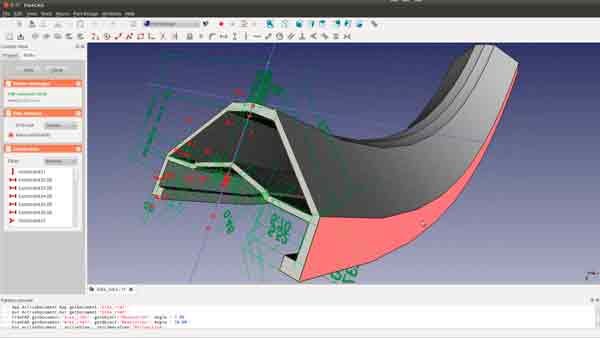
Logically, despite being an important achievement of the Open Source community, it is still more limited than commercial CAD software. But it is more than enough for most users, including home and maker users.
FreeCAD has a large number of users, abundant documentation and tutorials on the internet, being one of the main options for the home and maker field.
Design Spark Mechanical
DesignSpark Mechanical is a free CAD software resulting from the collaboration between RS Components and SpaceClaim Corporation, especially designed for 3D printing projects. It has a fairly professional interface, while being comfortable and simple for any user.
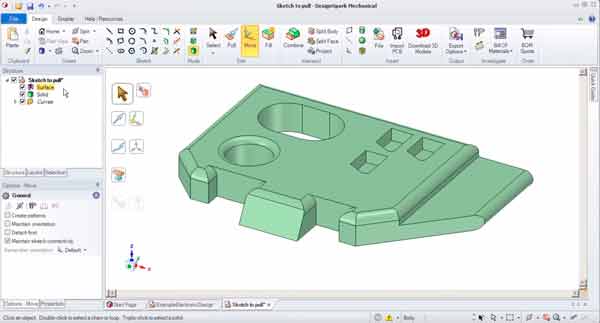
The drawing method of DesignSpark Mechanical is based on direct design tools, such as extruding faces, moving and rotating faces, and rounding. However, the tools are limited and lack the traditional advanced operations in a CAD.
However, its simple use and pleasant interface make it a good option for low-medium level users, and is sufficient for many 3D printing parts.
Sketch Up - Free
We couldn’t help but mention Sketchup in its free version, a program that thanks to its simplicity has gained great popularity for making quick designs and sketches. It is widely used, for example, in the realization of volumetric concepts in architecture.
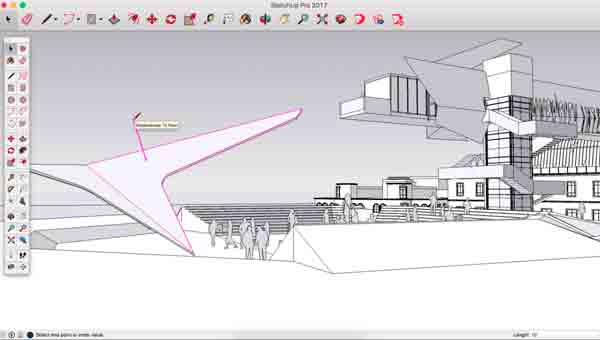
In its free version, Sketchup is a Web application that includes simple functions for direct solid drawing such as moving, extruding, and rotating faces. It allows exporting to STL, so the models can be used for 3D printing.
TinkerCad
We finish the section with TinkerCad, a free Web application for simple CAD drawing of parts. It is suitable for those who are starting out, especially for teaching and education of younger children.
TinkerCAD works with primitives (boxes, spheres, cylinders), along with a simple form of editing (displacement, rotate, and scale) and Boolean operations between them.
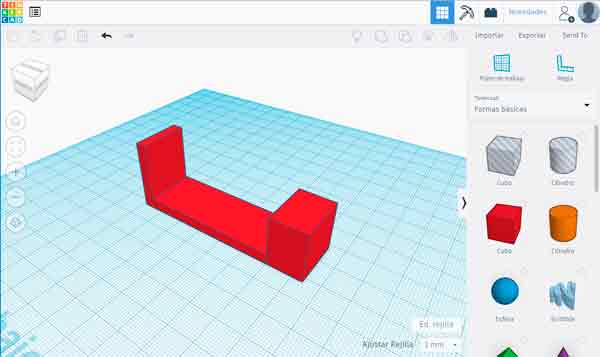
It is designed to be very easy to use although, logically, it is only suitable for simple models. The models can be exported to STL, so they are suitable for 3D printing.
Commercial CAD Software
Low-Range Sector
In this category we include CAD programs with a cost below €1000, although with reduced drawing capabilities compared to other commercial software.
We start by mentioning AutoCAD, the undisputed leader in 2D CAD that also incorporates 3D functions. Although in 3D it is very limited, especially by the interface, sometimes it can be sufficient for simple models.
We also have Rhinoceros, a fairly famous software based on NURBS surface drawing, which stands out for its low price compared to more complex options.
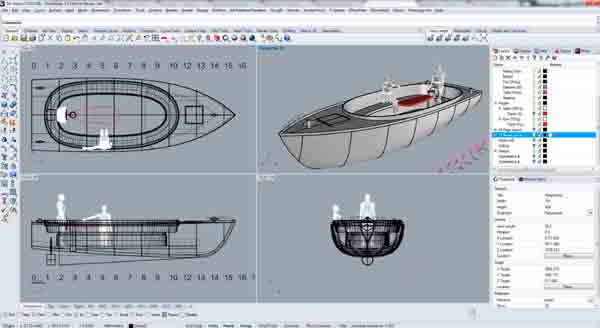
We also have Sketchup Pro, the paid version of Sketchup that adds many new functions such as CAD model export and import, or solid shape tools.
Finally, we have Fusion 360, a future bet of the company Autodesk to develop a collaborative, cloud-based CAD software that incorporates solid, surface, and mesh functions simultaneously.
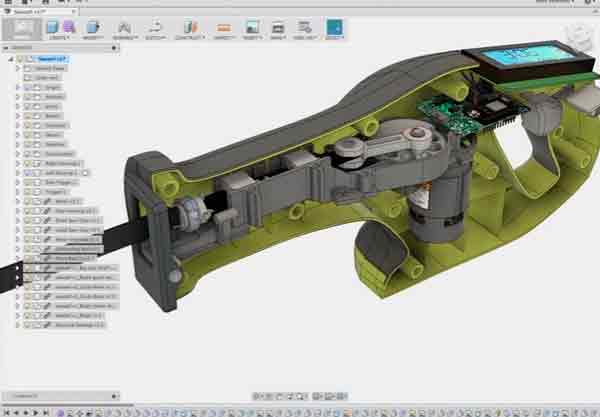
Originally Fusion360 had a license for makers and hobbyists that allows us to use it for non-commercial projects. However, subsequent changes to the licensing placed very important restrictions on its use so it is no longer a suitable option for domestic projects.
Mid-Range Sector
Here we include software whose license cost is between €1000 - €10000. They are the most widespread CAD range in small and medium-sized companies.
All these software incorporate the “traditional” functions of CAD, such as solid operations, surfaces, drafting, parametric design, direct editing, integration with PDM, machine export.
In addition, they begin to incorporate (or already have to some degree, but are focused on improving) more advanced features such as finite element simulation, electrical design, generative design, tools for additive manufacturing, and reverse engineering.
Within the category we highlight SolidWorks from the French company Dassault, probably the best known and most widespread CAD software.
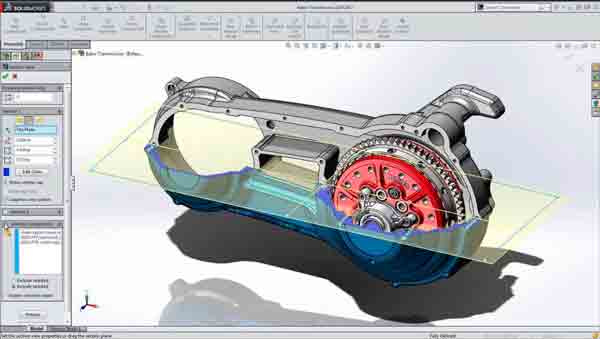
We also have Autodesk Inventor, the mid-range CAD alternative from the American company, which integrates with the rest of the company’s software to form a powerful and professional Suite.
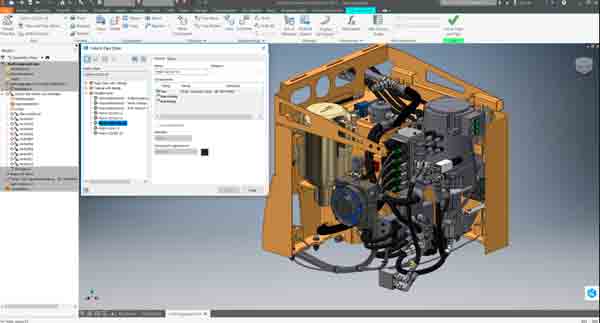
Finally, we have Siemens’ Solid Edge, which has a certain presence in Europe, although it is more unknown outside of it. Especially notable for its direct editing tools (synchronous mode).
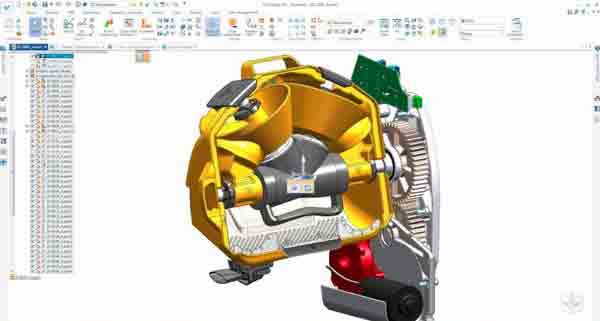
High-Range Sector
Here we have the most advanced CAD software, powerful and with a higher cost. They incorporate advanced surface design functions, advanced multiphysics simulation, and the most advanced calculation functions.
Because of their cost and complexity, we are not going to focus too much on these software since it is difficult for us to use them within the maker and hobbyist field (unless you have a “spare” Catia license
Surely the reference is the almighty Catia from the Dassault company. Catia is widely used in the aerospace, naval, and automotive industry.
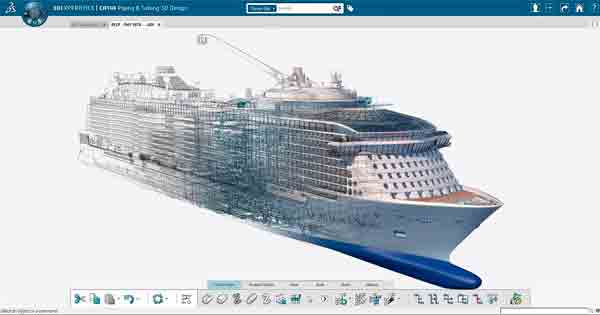
Other options are Siemens’ Unigraphics and PTC Corporation’s Creo Parametric (formerly Pro/e), widely used CAD software in the USA. Finally, mention Autodesk Alias, a software focused on the design of curved surfaces, used in automotive and conceptual design.
Conclusion
If you have access to a license of any of the Mid-Range or higher commercial CAD software (SolidWorks, Inventor, SolidEdge…), my advice is that you use it without any doubt. You will have a powerful tool and, in addition, you will be improving and gaining experience in something, so to speak, that you can “put on your CV”.
If not, and you have to use CAD exclusively in the hobbies and maker field, the logical option is FreeCAD. It represents an important effort by the community to achieve software with many of the functions of commercial software.
And you, what CAD software do you use? Do you miss any CAD software in the post? If you want, leave us your comment!
